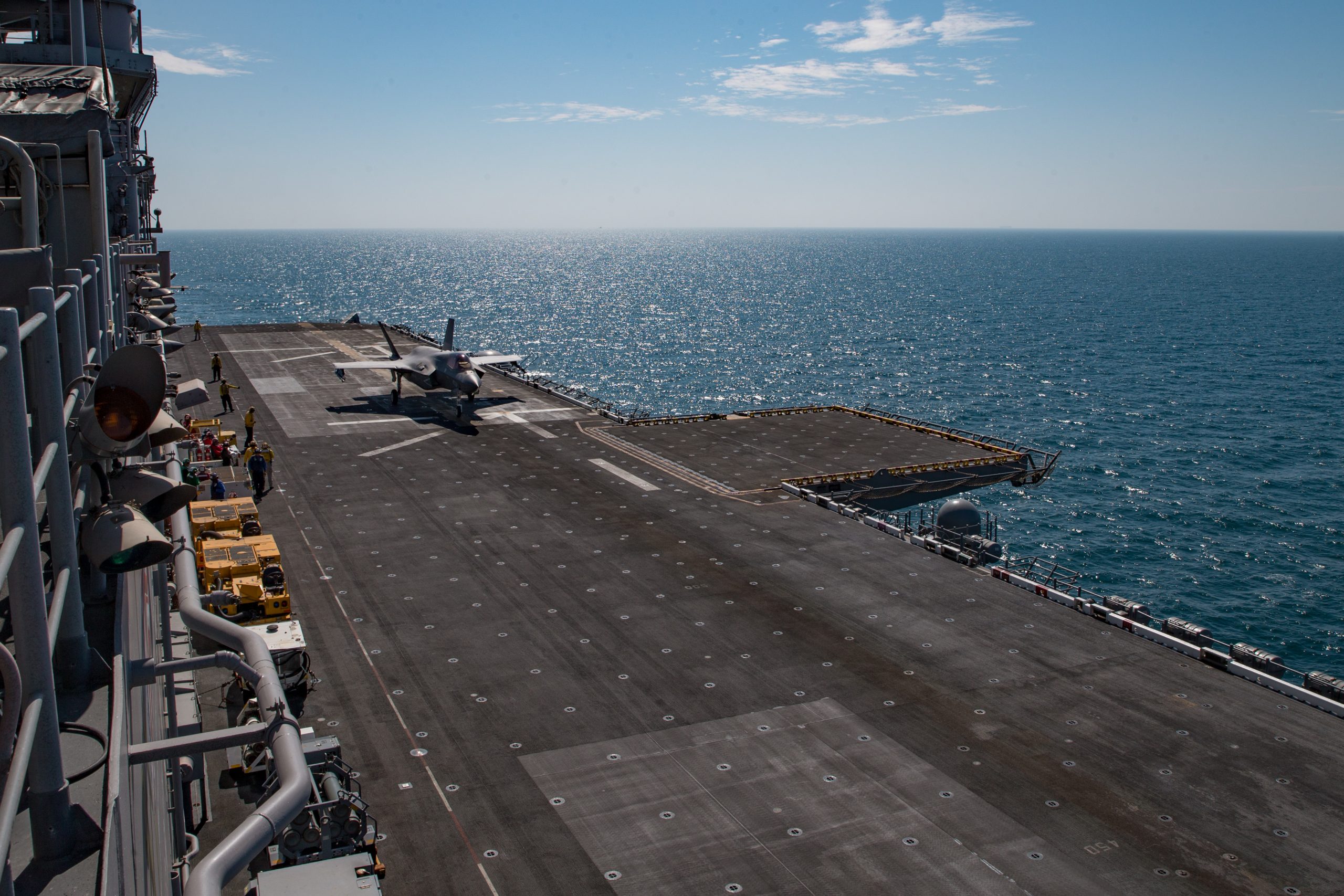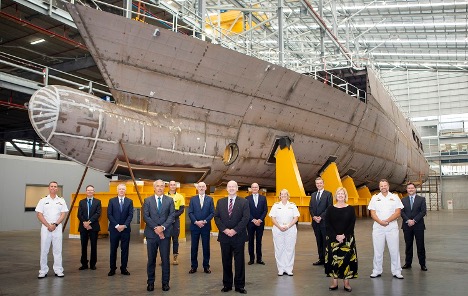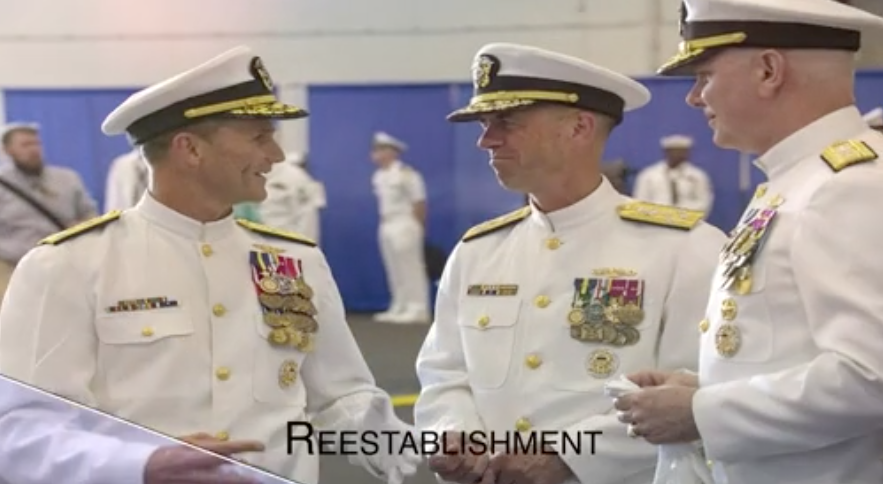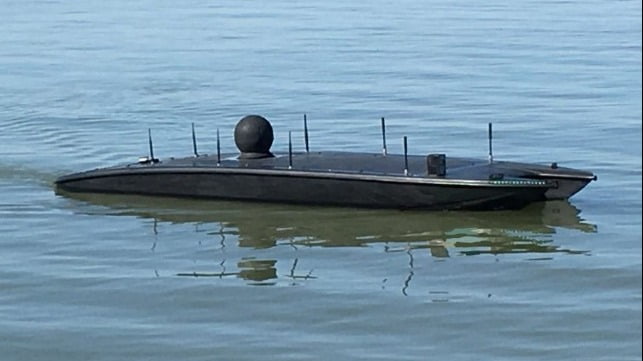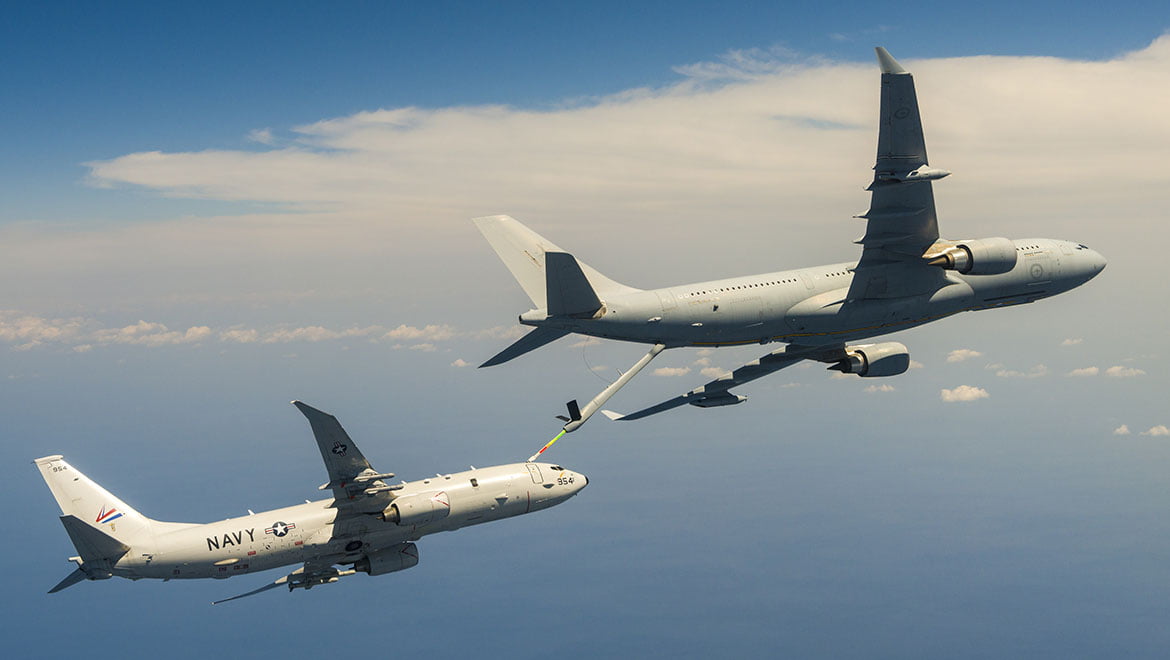By Robbin Laird
If one can develop a common maritime autonomy capability across a fleet of craft of different sizes, there is a clear advantage in terms of flexibility in operations. This flexibility comes from an ability to mix and match craft, operate larger craft as mother ships for smaller craft, and to have common logistics support, and enhance the impact which the controllers of these craft have on combat ships or nodes.
In a recent discussion with Bruce Hanson, the CEO of MARTAC systems, we discussed their approach to shape such an approach to the development of maritime autonomous systems.
We started the discussion by focusing on the advantages of an approach which delivers an autonomous platform, but is flexible with regard to the kind of payload which that platform can carry and support various tools for combat operations.
Hanson: “Basically, we said, “What’s lacking out there?” And really what it comes down to is the importance of performance, precision, and reliability. We focused on the question of hull design. V-hulls are predominant. There are a few things, both good and bad, about V-hulls. They have a tendency to roll a lot in the water. They are not consistent in tracking a path. And a lot of times they don’t deliver predicted performance capabilities.
“Because we have experience with both catamarans and V-hulls, we focused on building a maritime autonomous system around the higher performing catamaran. We started with a catamaran and a clean sheet of paper and then we said, “What would make this different, make it usable, reliable, low maintenance, and just plain indispensable to the end customers?”
“We came from the aerospace and aircraft world, and thought about that experience in relationship to what we could do in the maritime world. From day one, we designed our craft to be essentially a shell of a vessel, with a variety of boxes inside. And what those boxes do are anything from command and control to controlling various payloads, to propulsion, to communications, to whatever is needed for the mission.
“Our focus has been upon thinking of the unmanned vessel as a vessel shell, with a wide variety of mission capabilities based on the payloads onboard. The payloads can be swapped very quickly as needed, both in terms of capability, or in terms of, if for some reason, you were to have a rare failure, very quick swap outs in minutes, not hours or days
“We have avoided building proprietary systems for payload control and instead focused on making the interfaces as open as possible for interoperability and interchangeability. So you can exchange payloads quickly, whether it be software, hardware, or communications.
“To date, we’ve done hundreds of different sensors and comms on these crafts. With commercial customers let’s take comms as an example, they might want cellular capabilities or line of sight or SATCOM or all of them together. Our experience with commercial customers has reinforced our approach to military customers who are looking at a wide variety of payloads.
“When we first started our work in this domain, we knew a lot about the bigger craft. We had data on the big boats. But we couldn’t afford to pay for all these big boats for all our testing. So we decided to scale down. The smallest we’ve done is nine inches. But in general, the one we worked on most of the time, our workhorse, was a six-foot version. And the six-foot version is an exact scale model, of a larger vessel, in all aspects. And that took a while, to get the mold machine work done, and then get the mold made, and make this vessel.
“But we used that for testing, because we knew, if you can figure out a way to have full capability on a six-foot vessel, or most of the capability, then scale-up is much easier.
“We started with a six-foot boat as the main test workhorse, and from that, we said, “Well, everybody wants more payload, so let’s do an eight-footer.” When we scaled up from a six-foot to an eight-foot boat, the capability increased by a factor of about two to two and a half. Even though the boat’s only two feet longer, it has two to two and a half times the capability in payload. Then we went to a 12-foot boat. And that jumps to about a two to two and a half ratio above the eight-foot boat. Now your payload capacity really starts going up. Your ranges start going up. Your capability starts going up.
“We are now in position to work a range of crafts, with some working as mother ships for the smaller craft. The 50-foot is the largest we’ve built to date, in terms of what we have physically, but we can scale larger. We’ve already had the military asking us for 70 feet, 80 feet, 100 feet. Actually, the max we’ll probably do is somewhere around 120 feet. Obviously, your payloads go up with the larger craft. In other words, from the outset, we have focused on platform scalability.”
Question: Scalability is important as well with regard to efficient use of deck space.
How do your various craft fit on a wide variety of combat platforms?
Hanson: “You have brought up a key point. If you are going to build a maritime autonomous system to be used by a fleet of combat ships, it is important to fit into the ships seamlessly. We can do that with craft that can fit into 11-meter and 7-meter spaces on combat ships. The former fits on many U.S. Navy ships whereas the later fits an even wider variety of Navy ships.
“For example, by being able to operate from a 7-meter space, we can operate our systems in support U.S Navy ships in harbor safety or tight transit zones. Pick a number of our USVs, two, four, whatever the number is. Drop them off your ship, and they can now be full time guard dogs around your ship when you go into port, watch the area around it when you’re doing all the maneuvers to get to dockage or anchor or whatever you’re doing. And then, once you’re at anchor, they’re out there, watching and protecting your vessels. That’s a real-world example of how we ended up with a 24-foot, seven-meter equivalent. It came straight from a military request of what would be most helpful to them.

“Obviously, a similar case is crossing transit areas, like the Gulf of Hormuz. When Navy ships start entering a transit zone, you can send the maritime autonomous systems out and they can do mine countermeasure missions, or clear pathways, or perform straight ISR, or deter/disable fast intercept boats that Iran may send out. If you have a MANTAS Devil Ray onboard all these ships, you just drop those in the water, and they can intercept threats many miles away, before they can get close to your fleet, and keep them at bay, or disable them, whatever method you want to utilize to do that. Those are some real world uses.
“The scalability piece is a key part of enabling a fleet to use maritime autonomous systems in this way. These are very valuable in quantities, and that’s where the scale also comes in, because cost-wise, you may say, “Hey, I don’t want to have a bunch of 38-footers, and may not have the space for them or many 24-footers. Maybe I want X amount of 38s and Y amount of 24s, but I can have a ton of 12s and 8s, and drop those off the side of ships in clusters. And they can cover large areas when you put them in swarms. And they can operate as a powerful deterrent.
“The other advantage is cost and capability. The 12-foot or smaller craft are classified as disposable systems, but you can retrieve them. They’re easy to retrieve.”
Question: A key point as well is that these systems fit into fleet operations rather than burdening it.
How would describe this aspect provided by scalability?
Hanson: “End user usability of these vessels is very important, and that’s where the scalability does come in. Now you can have vessels that can have whatever scale or whatever size maritime autonomous system you want.
“In other words, you can have 8s, 12s, 24s, 38s, 50s. But the nice part about this is, because it’s a common command and control system, you can have a single user command and control multiple MANTAS vessels, of any size, at once. And that’s one of the things that make these unique.
“For example, you might send out a small commando team. It may consist of a 38, a couple 24s, and half a dozen 12-footers. A single user can control those. Or you can have two users control those if that is what you want to do.
“With our MantaNet system which has been designed from day one to be very user-friendly and very intuitive, you can have these, which are very mobile, on any given ship or group of ships, so now you have the smaller vessels where their capabilities are very high compared to their scale. And now you put them in the water, once again, and you can have a single or a couple people, up to you, drive these things. But they don’t have to drive them. That’s the whole point. We’re different. We’re not really remotely piloted. The boats are actually autonomous. And they do autonomy much better than people can, in terms of the sheer autonomy. In other words, they’ll drive themselves with much more precision than a person can drive them manually.
“But you always want somebody on the loop. They don’t have to necessarily be in the loop, but be on the loop. Let’s say you send out a group of 38s, some 24s, a bunch of 12s. Say they’re all doing the same ISR mission, just going to look for something, something along the shoreline, whatever it may be.
“What happens then is you tell them to perform a particular mission. You say, “Hey, go do this.” As a group, they will go do that. One of the 12-footers, they don’t want a person to have to sit there the whole time and look. It’s like, “Hey, I see an anomaly.” And they’ll track that thing. And then they’ll send back, saying, “Hey, I have an anomaly.” Maybe now you want to have a man in the loop going, “Hey, now I see something.”
“Perhaps the controller wants to take a closer look at something. He might want to take control of that vessel and say, “Hey, now I want to.” Or, the operator can turn around and say, “Maybe I don’t have time to take control.” He can talk with his buddy in another ship or on shore, that has one of our control units, and go, “Hey, I’m going to give you control of this thing. You go drive this thing around and tell me what’s going on. And if not, you tell it to go back and hang out with the swarm again, and go back to its autonomous mission.” Which it is capable of doing.”
Question: Another key part of the logistics side of all of this is total cost of ownership.
How do these systems provide for reasonable cost of ownership?
Hanson: “These craft were designed day one to be unmanned. Period. Autonomous unmanned, not just remotely operated, remotely piloted, but autonomous. Even the vessel themselves were designed from day one to operate Beyond Human Capability.
“And along those lines, because if it’s not people, then there’s a lot of things we can do that they can’t do with manned vessels. One of those things may be things as simple as a cooling system, or the way that these smaller vessels can change orientation and go vertical versus horizontal in the water when they’re sitting around or the vessels can be fully flooded. But what we really have done with these craft is to use U.S.-sourced parts and we have made these craft very reliable.
“What happens is their maintenance program, especially being aerospace LRU-based, is very low. They are very simple. You don’t need special technicians to work on these. Anybody can fix these, immediately, if there were to be a problem.
“But the other thing is we have overbuilt them. The reliability on these is extremely high. To give you an idea, we had our six-foot vessel which has gone over 5,000 miles. And the only failure we had in 5,000 miles of running a six-foot vessel was one prop shaft because it got snagged on a cable. The total cost of ownership on these craft should be pretty low.
“And then the final thing is the burden of people, which goes back to what I said earlier. MantaNet allows a low man loading needed for operating these. When you had the early days of unmanned vessels, heck, you needed more people to operate a Global Hawk, Reaper or Predator than you did an F-18.
“Our vessels are very efficient. It’s almost a one-to-one ratio, even in quantity, at best. Sometimes it’s a one to three ratio, one to four ratios, meaning one person, three vessels, four vessels. We really have done a fairly good job on man loading. Manning is very low, maintenance costs very low, reliability very high, and usability high. And that was the goal from the beginning.
Question: What is LRU?
Hanson: “Line Replaceable Unit. This came from our aerospace and aircraft background where maintenance is very important to reliability and ROI. The reason why is that the line replacement units on ours is considered a box. We have a rail system on our vessels. The rail system has quarter-turn fasteners, and then we have special connectors made for us by one of the largest connector companies. They are totally waterproof with quick turn connectors. You can take and replace any LRU, any box in this vessel, within three to five minutes.
“And almost every one of the boxes are inter-operable and interchangeable between all vessels, anywhere from six or eight feet all the way up to 50 feet. All the controls and commands in the system, other than the drivetrains, are truly interoperable among all those vessels.”


